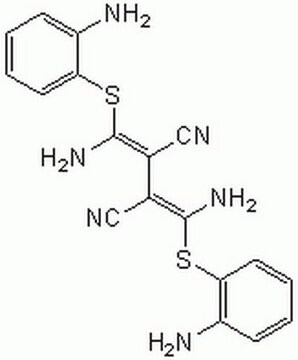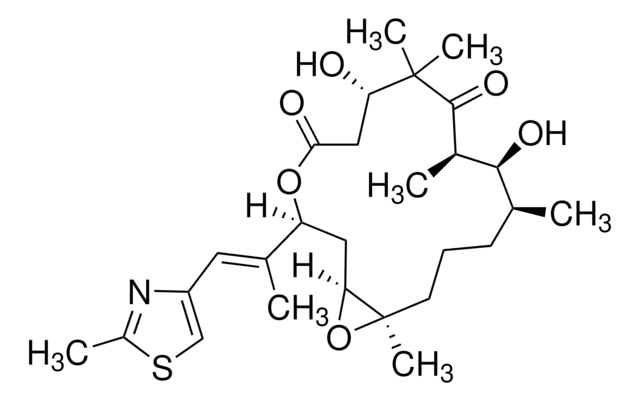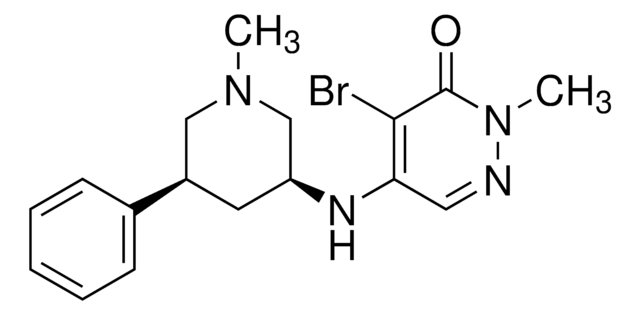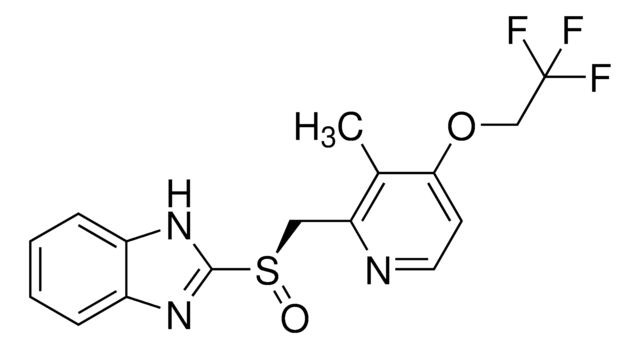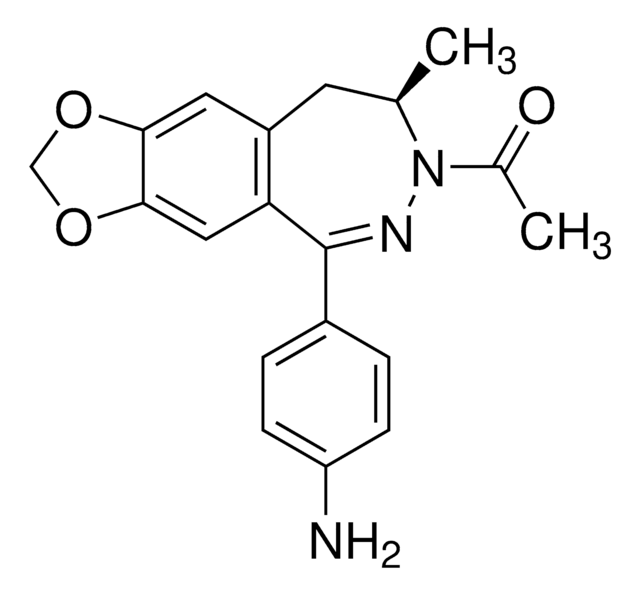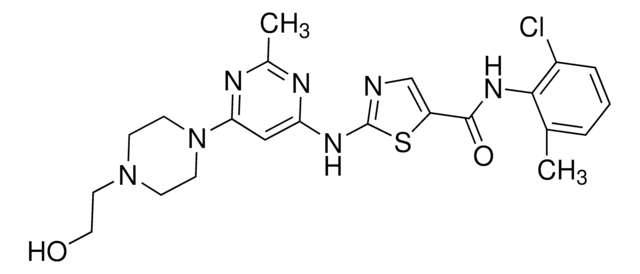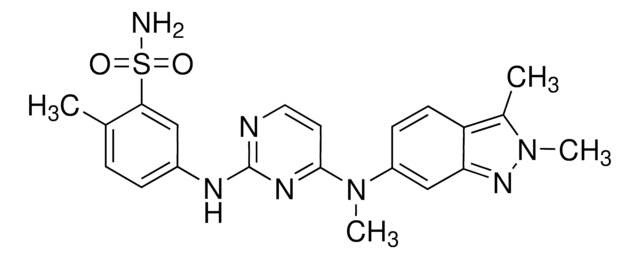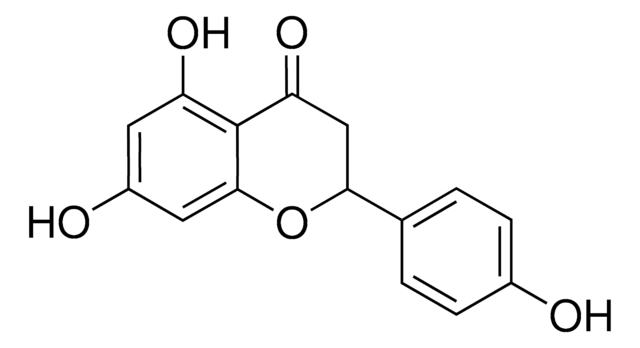SML2154
Deltarasin trihydrochloride
≥98% (HPLC)
別名:
(S)-1-Benzyl-2-(4-(2-(2-phenyl-1H-benzo[d]imidazol-1-yl)-2-(piperidin-4-yl)ethoxy)phenyl)-1H-benzo[d]imidazole trihydrochloride, 2-[4-[(2S)-2-(2-Phenyl-1H-benzimidazol-1-yl)-2-(4-piperidinyl)ethoxy]phenyl]-1-(phenylmethyl)-1H-benzimidazole trihydrochloride
About This Item
おすすめの製品
アッセイ
≥98% (HPLC)
形状
powder
保管条件
desiccated
色
white to beige
溶解性
H2O: 2 mg/mL, clear
保管温度
2-8°C
InChI
1S/C40H37N5O/c1-3-11-29(12-4-1)27-44-36-17-9-7-15-34(36)42-39(44)32-19-21-33(22-20-32)46-28-38(30-23-25-41-26-24-30)45-37-18-10-8-16-35(37)43-40(45)31-13-5-2-6-14-31/h1-22,30,38,41H,23-28H2/t38-/m1/s1
InChI Key
LTZKEDSUXKTTTC-KXQOOQHDSA-N
生物化学的/生理学的作用
保管分類コード
11 - Combustible Solids
WGK
WGK 3
適用法令
試験研究用途を考慮した関連法令を主に挙げております。化学物質以外については、一部の情報のみ提供しています。 製品を安全かつ合法的に使用することは、使用者の義務です。最新情報により修正される場合があります。WEBの反映には時間を要することがあるため、適宜SDSをご参照ください。
Jan Code
SML2154-5MG:
SML2154-VAR:
SML2154-BULK:
SML2154-25MG:
試験成績書(COA)
製品のロット番号・バッチ番号を入力して、試験成績書(COA) を検索できます。ロット番号・バッチ番号は、製品ラベルに「Lot」または「Batch」に続いて記載されています。
ライフサイエンス、有機合成、材料科学、クロマトグラフィー、分析など、あらゆる分野の研究に経験のあるメンバーがおります。.
製品に関するお問い合わせはこちら(テクニカルサービス)
